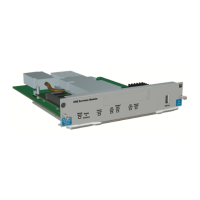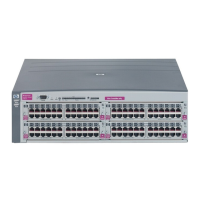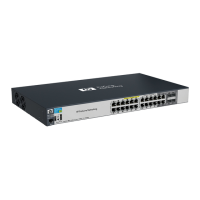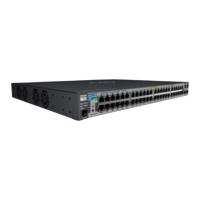1-19
Introducing the HP ProCurve 5400zl Switches
Switch Features
Introducing the HP ProCurve
5400zl Switches
Switch Features
The features of the 5400zl switches include:*
■ modules can be installed in any order and in any combination and can the
“hot swapped”
■ supported mini-GBICs can be hot swapped into the mini-GBIC zl Module
■ high performance—the 5406 Switch has a routing/switching capacity of
322.8 Gbps, with a switch fabric speed of 345.6 Gbps and a throughput of
249.2 Mpps. The 5412 Switch has a routing/switching capacity of 645.6
Gbps, with a switch fabric speed of 691.2 Gbps and a throughput of 480.3
Mpps
■ plug-and-play networking—all ports are enabled—just connect the
network cables to active network devices and your switched network is
operational
■ automatic learning of the network addresses in the switch’s 16,000-
address forwarding table, with configurable address aging value
■ full-duplex operation available on all ports
■ easy management of the switch through several available interfaces:
• web browser interface—an easy to use built-in graphical interface
that can be accessed from common web browsers
• console interface—a full featured, easy to use, VT-100 terminal inter-
face for out-of-band switch management, or for TELNET access to
the switch. The console includes complete switch management
through a command line interface (CLI) and a slightly reduced feature
set accessible through an intuitive menu interface
• ProCurve Manager—an SNMP-based graphical interface that is used
to manage your entire network, included with your new switch
• supported by ProCurve Network Manager—an HP OpenView appli-
cation that accurately displays your switch on network maps and
provides a graphical interface for configuring and monitoring your
switch
■ support for the Spanning Tree Protocol to eliminate network loops
■ support for up to 256 IEEE 802.1Q-compliant VLANs so you can divide the
attached end nodes into logical groupings that fit your business needs
■ Layer 3 routing functionality:
•IP static routes
• RIP V1 and V2
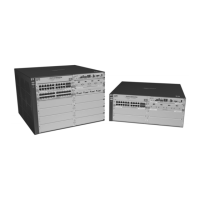
